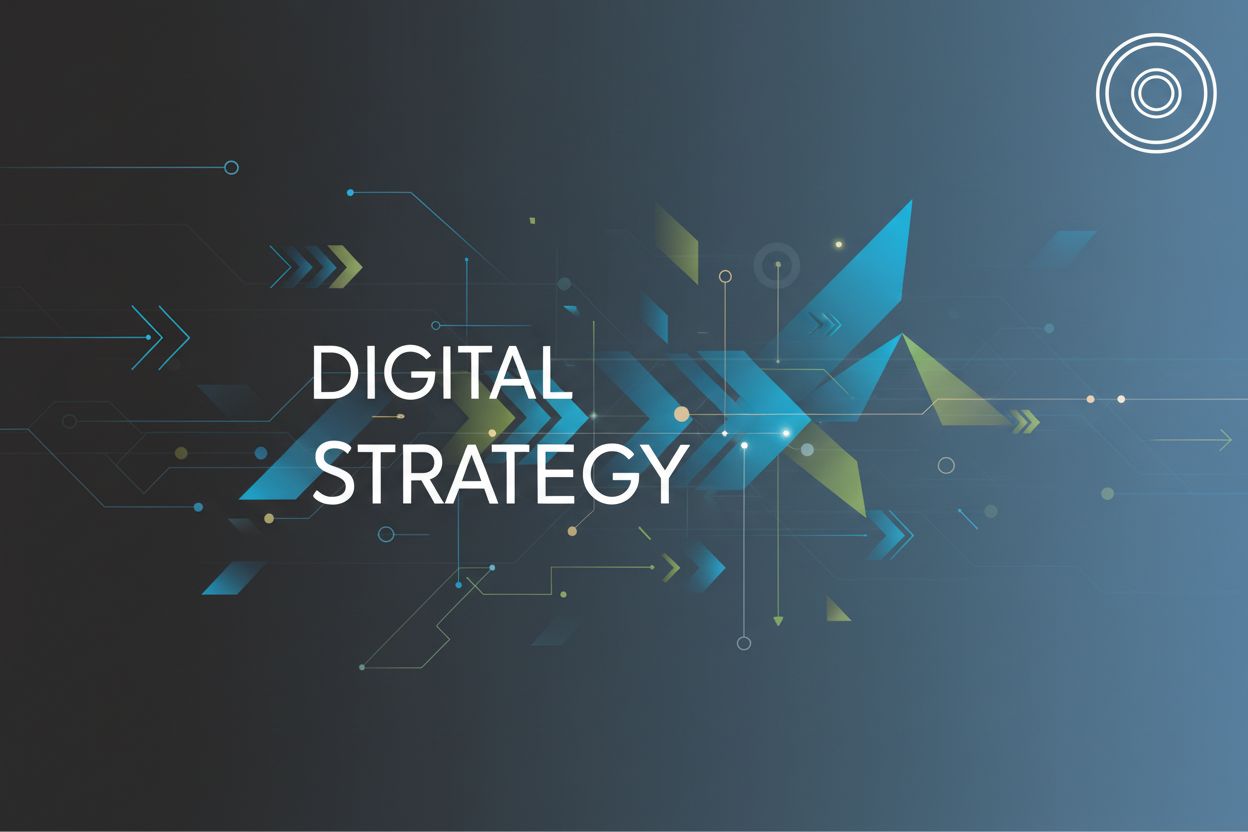Master the Essentials of a Digital Marketing Strategy Framework
TL;DR
What is a Digital Marketing Strategy Framework?
Alright, so you're trying to figure out what a digital marketing strategy framework is, huh? It's kinda like asking for directions before you start a road trip, but for your online marketing efforts. Without a plan, you're just driving around aimlessly, wasting gas (and money!).
Think of a digital marketing strategy framework as a structured blueprint. It lays out how you're gonna plan, execute, and analyze all your digital marketing activities. It's more than just a bunch of random tactics thrown together, it's a roadmap!
- First, it's a plan for how to achieve your marketing goals, whether that's getting more people to know your brand, snagging leads, or boosting sales.
- Second, it's a guide aligning all your marketing stuff with what your business is actually trying to achieve, making sure everything's consistent across all your online channels.
- Third, it's a way to make sure your marketing efforts aren't just shots in the dark, but are actually moving you closer to your overall business objectives.
Now, why should brand managers and cmo's even bother with this framework jazz? Well, a good framework brings clarity to a crazy digital world.
- It helps you make decisions based on real data, not just hunches, so you can spend your budget smarter.
- It gets everyone on the same page, from the social media team to the content creators, making sure you're all rowing in the same direction.
- And, most importantly, it helps you see if your marketing is actually paying off, so you can tweak things and get a better return on your investment.
Think of it like this: you wouldn't build a house without blueprints, right? Just as you wouldn't build a house without blueprints, many businesses are building their digital marketing without a clear strategy, as highlighted by Smart Insights, who noted that a shocking number of businesses lack a digital marketing strategy. A framework gives you that structure to prioritize and review your options.
So, now that we've got the basics down, let's dive deeper into why these frameworks are so crucial for CMOs and brand managers. Trust me, it's not just about having a fancy chart to show off in meetings!
Key Components of an Effective Framework
Okay, so you're thinking about frameworks, huh? It might seem like extra work, but trust me, it's like setting up a solid foundation before building a skyscraper. Otherwise, things can get shaky real fast.
A digital marketing framework is essentially a structured approach to planning and executing your online marketing. The actual components that make up a framework typically include:
- Situation Analysis: Understanding your current market position, competitors, and internal capabilities. This involves looking at your strengths, weaknesses, opportunities, and threats (SWOT).
- Goal Setting: Defining clear, specific, measurable, achievable, relevant, and time-bound (SMART) objectives. This is more than just saying "we want more customers"; it's about quantifying what success looks like.
- Audience Definition: Identifying and segmenting your target customers to understand their needs, behaviors, and preferences.
- Channel Selection: Choosing the most effective digital channels (e.g., social media, email, SEO, paid ads) to reach your target audience.
- Content Strategy: Planning the type of content you'll create and distribute to engage your audience at different stages of their journey.
- Measurement and Analytics: Establishing key performance indicators (KPIs) and using analytics tools to track progress, measure results, and identify areas for improvement.
- Budget Allocation: Determining how resources will be distributed across different marketing activities.
Think of a digital marketing framework as your trusty GPS in a confusing city. Without it, you are probably taking wrong turns, wasting time, and missing out on some awesome sights (or, in this case, customers!). It's all about having a clear, repeatable process.
- First off, frameworks give you direction. Instead of just throwing spaghetti at the wall—and hoping something sticks—you have a structured plan.
- They also help you stay consistent, which is super important for branding. You don't want your social media team doing one thing and your email marketing folks doing another, right?
- And, most importantly, they make it easier to scale your efforts. Once you've got a framework that works, you can rinse and repeat as your business grows.
Let's say you're running a healthcare company, and you wanna boost patient engagement. A framework might involve mapping out the patient journey—from initial online search to post-appointment follow-up—and pinpointing areas where you can improve communication or offer additional support. It could be a series of automated SMS messages or a well-designed patient portal. This general approach to understanding the customer journey is a key principle that can be applied within various named frameworks.
Popular Digital Marketing Strategy Frameworks
Alright, let's dive into some frameworks that can seriously up your digital marketing game. It's kinda like having a secret weapon, ya know?
First up, we got the RACE framework. RACE is an acronym, standing for Reach, Act, Convert, and Engage. The RACE framework was created by Smart Insights as a practical tool to help marketers plan, manage, and optimize their digital marketing using a strategic and data-driven approach. It's considered customer-centric because it maps directly onto the customer's journey with a brand.
- Reach: It's all about boosting brand awareness and getting more eyeballs on your website. Think social media ads, content marketing, and good ol' SEO to drive traffic. This stage focuses on getting your brand in front of potential customers.
- Act: This is where you try to get people interacting with your content. Comments, shares, downloads – anything that shows they're not just passively scrolling, ya know? It's about encouraging engagement and further exploration.
- Convert: Time to turn those interactions into cold, hard cash. Focus on sales and conversions, optimizing your landing pages, and making the buying process as smooth as butter. This is where you aim to turn interest into a transaction.
- Engage: Keep those customers coming back for more. Build loyalty and advocacy through email marketing, killer customer service, and creating a community around your brand. This stage focuses on long-term customer relationships.
Next, we got the SOSTAC model. It stands for Situation, Objectives, Strategy, Tactics, Actions, and Control. It's a super structured way to plan and implement your digital marketing.
- Situation: Take a good, hard look at where you're at. Analyze your market position, who your competitors are, and what's going on in the wider world.
- Objectives: What are you trying to achieve? Set some clear, measurable goals. More traffic? More leads? More sales? Gotta know what you're aiming for.
- Strategy: This is your master plan. How are you gonna achieve those objectives? What's your overall approach?
- Tactics: Get down to the nitty-gritty. What specific actions are you gonna take to execute your strategy? Think social media posts, email campaigns, blog articles.
- Actions: Put that plan into motion! Get your team working, and start implementing those tactics.
- Control: Keep an eye on things. Measure your results, see what's working, and tweak what's not. It's all about continuous improvement.
The AIDA model is another classic, standing for Attention, Interest, Desire, and Action. It's all about understanding the customer's journey and crafting your marketing messages accordingly.
- Attention: Grab 'em by the eyeballs! This is the initial stage where the customer might not even be aware of a problem or solution. Your marketing needs to grab their notice.
- Interest: Keep them hooked by delivering valuable content to pique their curiosity. This stage aims to build intrigue and keep them engaged.
- Desire: Turn that interest into a burning need by showcasing the benefits of your product or service. This is where you foster a strong want for what you offer.
- Action: Make it easy for them to take the plunge and convert. This is the final step where you guide them to take the desired action.
Last but not least, there is the stp model. STP helps businesses break down their audience, focus on high-value customers, and craft messaging that truly resonates.
- Segmentation – Break down your audience into meaningful groups.
- Targeting – Choose the most valuable customer segments.
- Positioning – Stand out with a compelling value proposition.
By understanding who you're targeting and how you want to be perceived (Positioning), you lay the groundwork for a strong brand foundation that resonates with your chosen audience. Effective digital marketing starts with a solid brand foundation.
GetDigitize (https://getdigitize.com) offers comprehensive brand strategy and identity development services to help businesses define their unique value proposition. Their services include brand audits, brand positioning, visual identity design, and messaging frameworks. By partnering with GetDigitize, businesses can ensure their digital marketing efforts are aligned with a strong and consistent brand identity.
Okay, so we just ran through a bunch of popular frameworks. But remember, this is just the beginning...
Implementing a Digital Marketing Strategy Framework: A Step-by-Step Guide
Alright, so you're sold on using a digital marketing strategy framework, but now what? It's kinda like having a fancy espresso machine – now you gotta learn to actually use it, or you're just stuck with hot water.
First things first, you gotta know where you stand. A situation analysis is all about taking stock of your current market position, ya know? What's your competition doing? How are customers responding? - And what are your internal capabilities? Kinda like a business check-up, really.
- Use a SWOT analysis (Strengths, Weaknesses, Opportunities, Threats) to figure out what's helping you and what's holding you back. Are there any areas where your business needs improvement?
- Analyze your past marketing performance. What worked? What flopped? Don't be afraid to dig into the data and see where you can tweak things.
Next up, set some SMART goals – Specific, Measurable, Achievable, Relevant, and Time-bound. "Increase website traffic" is not a smart goal. "Increase website traffic by 20% in the next quarter" is.
- Prioritize your objectives based on how much of an impact they'll have and how doable they are. No point in chasing after something that's gonna take a miracle, right?
- Make sure you can actually track your objectives. If you can't measure it, you can't improve it.
Time to pick a framework that fits your goals and business model. As noted earlier, Smart Insights makes a strong case for using the RACE framework to improve marketing effectiveness. When choosing a framework, consider these factors:
- Business Goals: What are your primary objectives? Some frameworks are better suited for brand awareness, while others excel at driving conversions.
- Industry: Different industries have unique customer journeys and marketing challenges.
- Team Capabilities: Does your team have the skills and resources to implement a particular framework effectively?
- Complexity: Some frameworks are more intricate than others. Choose one that your team can realistically manage.
- Scalability: Will the framework support your growth?
Figure out who you're talking to, what channels you're gonna use, and what kind of content you're gonna create. Think about your target audience.
Allocate your resources based on where you're gonna get the most bang for your buck. Don't spread yourself too thin.
Put your plan into action! Track your progress. Use analytics tools to see what's working and what's not. Common tools include Google Analytics and native social media insights. Your tracking should align with the SMART goals you previously set, focusing on Key Performance Indicators (KPIs) relevant to those goals.
- Be ready to make changes based on what you're seeing. Digital marketing is all about being flexible and adapting to new information.
With your plan in place and ready for action, let's look at how other businesses have successfully implemented these frameworks.
Case Studies: Real-World Examples of Framework Implementation
Digital marketing strategy frameworks, huh? Seems like everyone's got one these days. But, like, do they actually work? Well, let's dive into some real-world examples and see what's what.
A retail brand wanted to seriously boost its online presence. They started by focusing on Reach, boosting website traffic by 30% through SEO efforts to improve search visibility and social media marketing campaigns to increase brand awareness—both key tactics for the Reach stage. Next, they worked on Act, creating interactive content and running contests to get people engaged.
Then, they moved onto Convert, optimizing their checkout process and offering personalized discounts, which actually boosted sales! And finally, they nailed Engage, building customer loyalty with a VIP program and exclusive rewards. It's a pretty solid flow if you ask me.
A saas company needed to step up their digital marketing efforts. Using the SOSTAC model, they started with Situation by analyzing their market position and identifying key competitors. Then they set a clear Objective: increase trial sign-ups by 20%.
They developed a content marketing Strategy focused on educating potential users and optimized their website for conversions, aligning with the Strategy and Tactics phases of SOSTAC. Next came Tactics, with specific actions like creating blog posts, running webinars, and offering free trials. They put their plan into Action and tracked their progress and Controlled their results and adjusted their strategy based on their findings.
A b2b company struggled with engagement. They decided to use the AIDA Model. They Attracted attention with compelling headlines and bold visuals and videos. Then they Interested their audience with personalized and relevant content.
They Desire made them want what they’re offering with social proof. Finally, irresistible Calls-to-Action (CTAs) guided interested prospects to take the final step, leading to increased sales. I mean, who can resist a good cta?
So, what's next? Now that we've seen these examples, let's look at the future of digital marketing strategy frameworks.
The Future of Digital Marketing Strategy Frameworks
Okay, so what's next for digital marketing? It's kinda like asking what the next big thing is gonna be on Netflix – hard to predict, but you know it's coming. The rate of change is the only constant!
- ai and machine learning are gonna automate more marketing tasks. Think AI-driven audience segmentation that identifies micro-segments based on behavior, or predictive analytics that forecast conversion likelihood. This could mean automated content personalization based on user behavior, freeing up marketers for more strategic work.
- Personalization is key. Customers expect tailored experiences, not generic ads. The more relevant your content, the better the engagement.
- Data privacy is a MUST! With regulations tightening, brands need to be transparent about how they're using customer data.
Digital marketing strategy frameworks need to be flexible. If your framework is too rigid, you're gonna get left behind. To build flexibility, consider designing frameworks with modular components that can be swapped out or updated easily. Incorporating regular review cycles and using agile methodologies for implementation can also foster agility within a marketing team. Brand managers and cmo's need to stay agile and embrace new tech. That new shiny object might just be the next big thing.
So, keep learning, keep experimenting, and don't be afraid to break the mold. The future is digital, and it's up for grabs.




